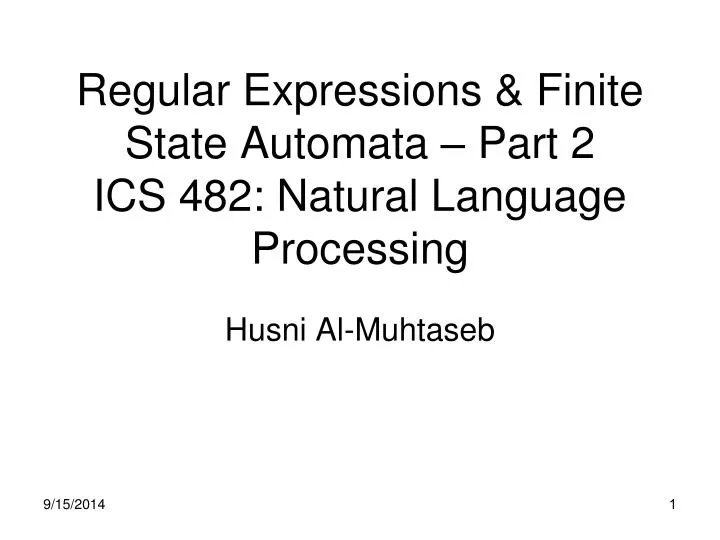
This is one of the most useful theoretical computation model.language. D Turing machine.Deterministic Finite Automaton ( DFA) is the simplest version of Finite Automaton and is used to accept Regular Languages in Theory of Computation. C Non-Deterministic pushdown automata. B Deterministic pushdown automata. The lexical analysis for a modern computer language such as Java needs the power of which one of the following machine models in a necessary and sufficient sense A Finite state automata. Languages, finite automaton finite state machine fsm , a finite state machine fsm or finite state automaton fsa plural automata finite automaton or simply a state machine is a mathematical model of computation it is an abstract machine that can be in exactly one of a finite number of states at any given time the fsm can change from one state to.
Deterministic Finite Automaton (DFA)Deterministic Finite Automaton (DFA) in Theory of Computation is the simplest version of Finite Automaton which is used to model Regular Languages.DFA is denoted as a 5 tuple: M = (Q, Σ, δ, q 0, F) where: Deterministic Finite Automata (DFA) vs Nondeterministic Finite Automata (NFA)Prequisite: Regular Language, Regular Grammar, Finite AutomatonLet us get started with Deterministic Finite Automaton (DFA). How to prove a Language is not Regular? (using DFA)

So, if there is a Deterministic Finite Automaton M for L, there exists another Deterministic Finite Automaton N for ~L. If Language L is a Regular Language, then the Language ~L ( complement of L) is also a Regular Language. If a Language L is a Regular Language, then there must be a Deterministic Finite Automaton M such that L(M) = L. Single circle denotes a transition state. Examples of DFAF = is the set of accept statesΔ is the transition function and is denoted for the following table: δThe above table is known as " State Transition Table".Following is the state diagram of our DFA:

Minimization Problem: Does a DFA have the minimum number of state for a given language?As there are algorithms to solve all these problems in linear time O(N) for DFA, this makes DFA is very useful model in Theory of Computation. Inclusion Problem: Does the language recognized by one DFA included in language recognized by another DFA. Equality Problem: Does two DFAs recognize the same language Universality problem: Does a DFA accept all strings? Emptiness Problem: Does a DFA accept any string? If p belongs to F, then return YES else return NO.DFA Membership Problem can be solved in Linear Time O(N).There are other similar problems which can be solved using a DFA:
DFA A is equivalent to DFA B if L(A) = L(B) Minimization algorithm for DFA This results in a contradiction as M should accept either both or none.Therefore, in these lines, you can prove that the given Language L is not Regular Language using DFA. Show that there exists a string z such that xz belongs to L but yz does not belong to L. Use Pigeonhole principle to show that there exists two distinct strings x and y which will reach the same state in M. Assume there exists a DFA M for which L(M) = L.
Construct a new DFA with minimal states by declaring each cell in the above list to be a state. For every state i, define a list of cells which are not marked. Mark a cell (a, b) with X if (a, b) does not have a mark and there exists a transition from cell (a, c) and (b, c) and one of them has the mark. Initialize table with X for the cells (i, j) which involve one of the states i or j as accept state. Make a 2D table where rows and columns are denoted by different states of DFA A. Remove all states that cannot be reached from the stating state of DFA A.
NFA can have multiple transitions from a given state for a given input.This makes NFA Non-deterministic as there is not a deterministic path that is a single option / path.With this article at OpenGenus, you must have a strong idea of Deterministic Finite Automata (DFA) in Theory of Computation. DFA has only one transition from a given state for a given input. For proving that for every NFA, there is an equivalent DFA in 1959, the Turing Award was given to Rabin and Scott.The major difference between DFA and NFA is:


 0 kommentar(er)
0 kommentar(er)
